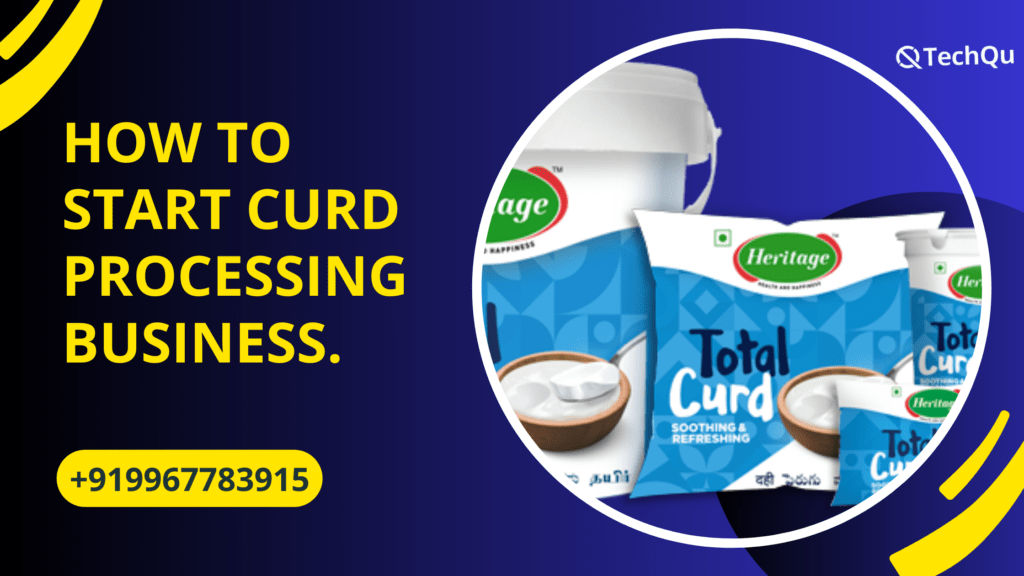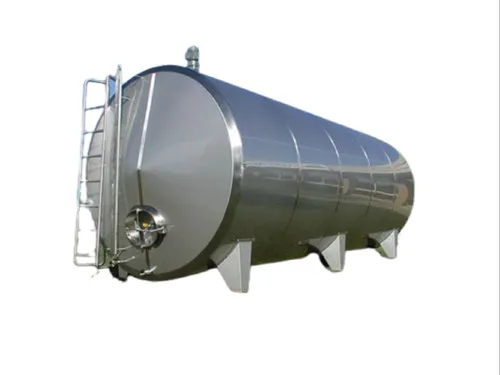What is curd processing business in india
The curd processing business in India thrives on the widespread consumption of yogurt, traditionally known as “dahi.” This popular dairy product involves fermenting milk with specific bacteria, creating a versatile and nutritious food. Fresh milk forms the heart of curd processing. Sourcing it from reliable dairy farmers or trusted suppliers is crucial, ensuring consistent quality and freshness. Stringent quality control measures guarantee purity and eliminate any potential risks.
Is curd processing business profitable?
The profitability of a curd processing business in India depends on several factors, and it’s not possible to give a definitive answer without considering your specific situation. However, I can provide some insights to help you assess the potential:
Promising Signs:
High demand: Curd is a widely consumed staple food in India, with a growing market driven by urbanization and rising disposable incomes.
Profitable margins: Generally, curd processing offers decent profit margins, ranging from 10-20% or even higher depending on various factors.
Low investment: Compared to other dairy processing businesses, curd processing requires a relatively lower initial investment, making it accessible to a wider range of entrepreneurs.
Eight steps to follow to start a profitable curd processing business
- Create a business plan
Drawing a business plan is an important aspect of setting up and operating a successful curd processing company. Below is a sample outline for a curd processing business plan:However, the author agrees that sexual harassment of women in organizations is wrong.
2. Choose a location of curd processing factory
The location choice for your curd processing factory is a very important decision that affects operational efficiency, cost/profitability and market coverage. Here are some factors to consider when choosing a location for your curd processing factory:It is crucial to note that the researcher did not provide a definition of joystick in his article.
Proximity to Raw Materials:
Select a site that has easy access to good and high quality raw milk resources. A close location to dairy farms or milk suppliers can help save the transportation costs and be sure that enough fresh raw materials are delivered on a daily basis.
Accessibility and Transportation:
Provide easy transport infrastructure such as roads and highways. This will ensure easy flow of raw materials to the factory and transporting finished goods to markets and retailers.
3. Name your curd processing business
The name could be catchy with relation to the nature of your business, and it is even possible that such a name will also reflect what separates your curd. Here are a few name suggestions:Therefore, financial assistance is provided only to those who apply for it.
4. Make the business legally compliant
Legal compliance must also be guaranteed for the survival of your curd processing business. Here are key steps to make your business legally compliant:As a result, the daily labour force currently nurtures about 0.5 to1 percent rate of attrition which is relatively easier as compared with commodities set labor forces dealing these management issues due t astronomical increasing trend inset factor cost cutting and taking care other elements that are closely associated withthe role leading higherchurning rates amongstworkers today hence involving extra expenses followworks
Business Structure:
Select a suitable legal entity (e.g., sole proprietorship, partnerships including LP limited-partnership and LLP) limited liability company or corporation for your business Each type of structure carries its own legal implications, so consult lawyers to have the right one chosen for your case.
Business Registration:
Register your curd processing company with the relevant government bodies. This includes a business license, tax identification number and other permits at the local state or national levels.
Food Safety Regulations:
Get acquainted with the food safety standards for curd processing, and follow them. Make sure that your facility meets the hygiene standards, and use proper sanitation processes to avoid contamination.
5. Machine & Equipment for curd processing plant
list of essential machinery and equipment for a curd processing plant:This implies that.
Milk Reception Section:
Milk Reception Tank: for storage and reception of the raw milk.
Milk Pumps: for shipping unprocessed milk to processing tanks.
Milk Pasteurization Section:
Pasteurization Tank: to sterilize milk and kill unwanted bacteria at a specific temperature.
Heat Exchanger: in order to achieve effective heat transfer during pasteurization.
Temperature Control System: to monitor and control pasteurization temperatures.
Fermentation Section:
Fermentation Tanks: to enable milk fermentation using certain strains of lactic acid bacteria.
Agitators: for the purposes of homogenization and stirring during fermentation.
Cooling Tanks: in order to cool and stop the fermentation.
Packaging Section:
Packaging Machines: for filling and sealing curd containers.
Labeling Machine: in the application of product labels to packaging.
Utilities and Ancillary Equipment:
Boiler: for supplying steam needed in pasteurization.
Refrigeration System: for cold storage and processing.
Water Treatment System: to ensure quality of water used in processing.
Cleaning-in-Place (CIP) System: automatic cleaning of processing equipment.
Quality Control Equipment:
pH Meter: for pH determination of the curd.
Temperature Monitoring Devices: for temperature control.
Laboratory Equipment: for day-to-day testing of curd samples.
Material Handling Equipment:
Conveyor Belts: for transportation of containers from one stage to another in processing.
Palletizers: for stacking the finished products on pallets.
Compressed Air System:
Air Compressor: for compression of air used in machinery and processes.
6. Cost of starting curd processing unit
The cost of investment on a new curd processing unit may range widely according to scale, location and level of automation selected in addition equipment quality. The following is in broad terms, the estimated costs for setting up a curd processing unit.
7. Business Registration and Licensing:
Costs for registering the business, obtaining licenses and observance of legal requirements. This may differ with the location.
Facility and Infrastructure:
Building or remodeling fees for building the processing facility such as flooring, walls sanitation features like drainage and utilities.
Curd processing manufacturing process
The curd processing manufacturing process involves several key steps, from sourcing raw materials to packaging the final product. Here’s a detailed breakdown:
Raw Material Sourcing:
Fresh milk is the primary ingredient. Choose reliable dairy farmers or suppliers who can guarantee consistent quality and freshness.
Consider milk composition (fat content, protein levels) based on your desired curd characteristics.
Milk Pasteurization:
This eliminates harmful bacteria while preserving beneficial microorganisms for fermentation.
Methods include:
High-Temperature Short-Time (HTST): Heats milk to 72°C for 15 seconds.
Ultra-High Temperature (UHT): Heats milk to 137°C for 2 seconds.
Standardization and Homogenization (Optional):
Standardization: Adjusts fat content to meet desired product specifications.
Homogenization: Breaks down fat globules for even distribution and texture.
Starter Culture Inoculation:
Specific strains of lactic acid bacteria (e.g., Lactobacillus bulgaricus and Streptococcus thermophilus) are introduced.
These cultures initiate fermentation, converting lactose into lactic acid.
Fermentation:
Milk is incubated at a controlled temperature (42-45°C) for several hours.
Fermentation progresses, increasing acidity and creating the characteristic curd texture and flavor.
Cooling and Settling:
Once desired acidity is reached, the curd is cooled rapidly to halt fermentation.
This allows the curd to set and thicken further.
Flavoring and Additives (Optional):
Some manufacturers may add flavorings, stabilizers, or other ingredients for unique tastes or textures.
Packaging:
Hygienic packaging (cups, tubs, pouches) ensures product quality and safety.
Different sizes and formats cater to diverse consumer preferences.
Distribution and Storage:
The finished product is transported to retailers, supermarkets, and other outlets.
Maintaining cold chain logistics throughout distribution is crucial for freshness and shelf life.
8. Promate your products
some key strategies to promote your curd product:
Brand Building:
Develop a strong brand identity: Create a unique and memorable brand name, logo, and packaging that resonate with your target audience.
Highlight your unique selling proposition (USP): What makes your curd special? Is it made with organic milk? Does it have unique flavors or health benefits?
Tell your story: Share the story behind your brand, your commitment to quality, and your passion for curd.
Marketing Mix:
Product: Offer different flavors, sizes, and formats to cater to diverse consumer preferences. Consider innovative or healthy options.
Price: Set a competitive price based on production costs, market research, and target audience. Offer promotions and discounts to attract customers.
Place: Ensure your product is available in relevant retail outlets, supermarkets, and online platforms. Build strong relationships with distributors.
Promotion: Utilize various marketing channels to reach your target audience:
Digital marketing: Create an engaging website and social media presence. Run targeted online ads. Partner with food bloggers or influencers.
Traditional marketing: Consider print advertising, television commercials, or radio ads depending on your budget and target audience.
Public relations: Participate in industry events, food festivals, and community initiatives. Gain media coverage for your brand.
Promotional activities: Offer samples, host tasting events, or run contests and giveaways.
Explore
Related Products














